 |
|
 |
|
 |
|
 |
|
 |
|
 |
|
 |
|
 |
|
 |
|
 |
|
 |
|
 |
|
 |
|
 |
|
 |
|
 |
|
 |
|
 |
|
 |
|
 |
|
Site Archive (1997-2020) - Depuis 2021 le nouveau site est / Since 2021 the new website is ICI/HERE »»» |

 FEAT - FUTURE EMERGING ART AND TECHNOLOGY > ARTICLES FEAT - FUTURE EMERGING ART AND TECHNOLOGY > ARTICLES
|
|
|
|
Articles
All articles are downloadable Pdf when you click on "more".
| Erich Prem, "Truth Emerging From Leading-Edge Art/Science/Technology Interaction"
 The FEAT initiative organized and studied residencies of leading international artists in European Future and Emerging Technology projects. During the residencies, the artists closely collaborated with engineers and scientists on fundamental research in visionary areas of novel technologies not solely as an artistic endeavor, but also to investigate effects of artistic engagement on technoscience. Effects of the collaboration are visible on many levels including fundamental questions about the technoscientific project objectives, ethical aspects, and the aesthetics of scientific experiments. Interactions also resulted in long-term relations and opportunities for scientists to engage with artists in a
shared effort to uncover truth.
(more)
The FEAT initiative organized and studied residencies of leading international artists in European Future and Emerging Technology projects. During the residencies, the artists closely collaborated with engineers and scientists on fundamental research in visionary areas of novel technologies not solely as an artistic endeavor, but also to investigate effects of artistic engagement on technoscience. Effects of the collaboration are visible on many levels including fundamental questions about the technoscientific project objectives, ethical aspects, and the aesthetics of scientific experiments. Interactions also resulted in long-term relations and opportunities for scientists to engage with artists in a
shared effort to uncover truth.
(more)
|
|
| Anna Dumitriu, "Make Do and Mend: Exploring Gene Regulation and CRISPR Through a FEAT (Future Emerging Art and Technology) Residency With the MRG-Grammar Project"
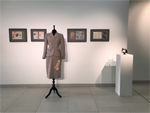 This article documents the artistic research the author undertook for her FEAT (Future Emerging Art and Technology) residency. It describes her collaboration with the MRG-Grammar consortium and the creation of an artwork that involved editing the genome of a bacterium using CRISPR to reflect on issues related to antimicrobial resistance, bio-hacking and control. The article explores the author's methodology and describes the benefits of longterm embedded residencies to create artworks that are deeply engaged with emerging technologies with a view to enable the public to access the concepts and implications of cutting edge technologies and scientific research, through an artistic lens.
(more)
This article documents the artistic research the author undertook for her FEAT (Future Emerging Art and Technology) residency. It describes her collaboration with the MRG-Grammar consortium and the creation of an artwork that involved editing the genome of a bacterium using CRISPR to reflect on issues related to antimicrobial resistance, bio-hacking and control. The article explores the author's methodology and describes the benefits of longterm embedded residencies to create artworks that are deeply engaged with emerging technologies with a view to enable the public to access the concepts and implications of cutting edge technologies and scientific research, through an artistic lens.
(more)
|
|
| Spela Petrič & Miha Turič , "Becoming. A(Thing): An Artists' Perspective on High Performance Computing"
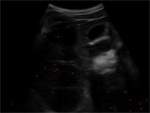 The article summarizes the process and outcome of the Future Emerging Art and Technology residency during which new media artists pela Petrič and Miha Turič undertook the challenge of understanding and manifesting the artistic potential of high-performance computing (HPC). As a result of the collaboration with FET-HPC the artists developed a concept liberated from the complex computational technicity to underscore the (un)intentional construction of meaning by algorithmic agencies. The performance presents a congress of actors sensing, interrogating and interrupting each other, thereby producing an excess of relation, interpretation and translation. The heterogeneous congress performs an expulsion of imposed (anthropogenic) meaning, substituted by authentic, autogenic sense and non-sense.
(more)
The article summarizes the process and outcome of the Future Emerging Art and Technology residency during which new media artists pela Petrič and Miha Turič undertook the challenge of understanding and manifesting the artistic potential of high-performance computing (HPC). As a result of the collaboration with FET-HPC the artists developed a concept liberated from the complex computational technicity to underscore the (un)intentional construction of meaning by algorithmic agencies. The performance presents a congress of actors sensing, interrogating and interrupting each other, thereby producing an excess of relation, interpretation and translation. The heterogeneous congress performs an expulsion of imposed (anthropogenic) meaning, substituted by authentic, autogenic sense and non-sense.
(more)
|
|
| Vicky Isley and Paul Smith (Boredomresearch), "Simulated Despondency for Robots in Distress"
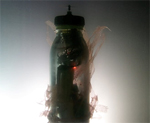 It is widely accepted that increased human interaction with natural systems is responsible for complex environmental issues, with most current thinking, centered on the provision of advanced technological solutions. One response emerging from current bio-inspired robotics research, proposes artificial neural networks (ANN) enhanced with the incorporation of artificial hormones for increased performance and efficiency. Here the authors discuss their artistic project concept, developed in collaboration with a bio-inspired artificial life lab, considering the affordance of emotional robotics to develop despondency in the field.
(more)
It is widely accepted that increased human interaction with natural systems is responsible for complex environmental issues, with most current thinking, centered on the provision of advanced technological solutions. One response emerging from current bio-inspired robotics research, proposes artificial neural networks (ANN) enhanced with the incorporation of artificial hormones for increased performance and efficiency. Here the authors discuss their artistic project concept, developed in collaboration with a bio-inspired artificial life lab, considering the affordance of emotional robotics to develop despondency in the field.
(more)
|
|
| Evelina Domnitch, Dmitry Gelfand, Tommaso Calarco, "Trapping the Objectless"
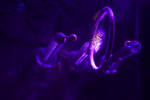 Through the epistemological lenses of quantum theory and phenomenological art, the authors describe their collaborative development of several artworks exploring electrodynamic levitation. Comprising diverse ion traps that enable naked-eye observation of charged matter interactions, these artworks question the murky boundaries of perceptibility and objectification.
(more)
Through the epistemological lenses of quantum theory and phenomenological art, the authors describe their collaborative development of several artworks exploring electrodynamic levitation. Comprising diverse ion traps that enable naked-eye observation of charged matter interactions, these artworks question the murky boundaries of perceptibility and objectification.
(more)
|
|
| Kerstin Ergenzinger, Thorsten Schumm, Simon Stellmer, "Nubis et Nuclei: A Study On Noise and Precision"
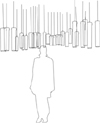 This study sets out to explore the perception of noise, as well as the relation towards meaning or information that it might contain, in arts, science and daily life. It is realized as an installation based on a suspended cloud of nitinol drums that create a sonic environment evolving in time and space. The instruments are driven by digital random noise. Roaming freely and listening, visitors become part of an ecology of noise. Exploring the differing regions in time and space, what appears to be noise can shift to a "meaningful" signal. This process of discovering a clear signal in a noisy background holds strong analogies to the scientific search for a nuclear resonance performed in the "nuClock" project.
(more)
This study sets out to explore the perception of noise, as well as the relation towards meaning or information that it might contain, in arts, science and daily life. It is realized as an installation based on a suspended cloud of nitinol drums that create a sonic environment evolving in time and space. The instruments are driven by digital random noise. Roaming freely and listening, visitors become part of an ecology of noise. Exploring the differing regions in time and space, what appears to be noise can shift to a "meaningful" signal. This process of discovering a clear signal in a noisy background holds strong analogies to the scientific search for a nuclear resonance performed in the "nuClock" project.
(more)
|
|
|
|
|
|
|
 | |
Le projet FEAT / Future Emerging Art and Technology est soutenu financièrement par le programme d'innovation et de recherche Horizon 2020 de l'Union Européenne (accord de financement n° 686527 - H2020-FETOPEN-2015-CSA).
The FEAT / Future Emerging Art and Technology project is supported by funding from the European Union's Horizon 2020 research and innovation programme under grant agreement No 686527 (H2020-FETOPEN-2015-CSA).
|
[ S'abonner ] [ Recherche ] [ Statistiques ]
[ Accueil ]
Copyright Association Leonardo/OLATS © 1997
pour toute re-publication de cette page, merci de contacter Annick Bureaud < info@olats.org>
pour les problèmes concernant le site, notre webmaster < webmaster@olats.org>
Leonardo is a federally registered trademark of Leonardo/ISAST -
Leonardo est une marque déposée de Leonardo/ISAST, selon la loi fédérale
des Etats-Unis d'Amérique.
|
|









